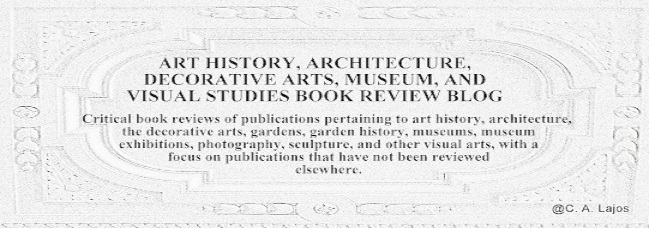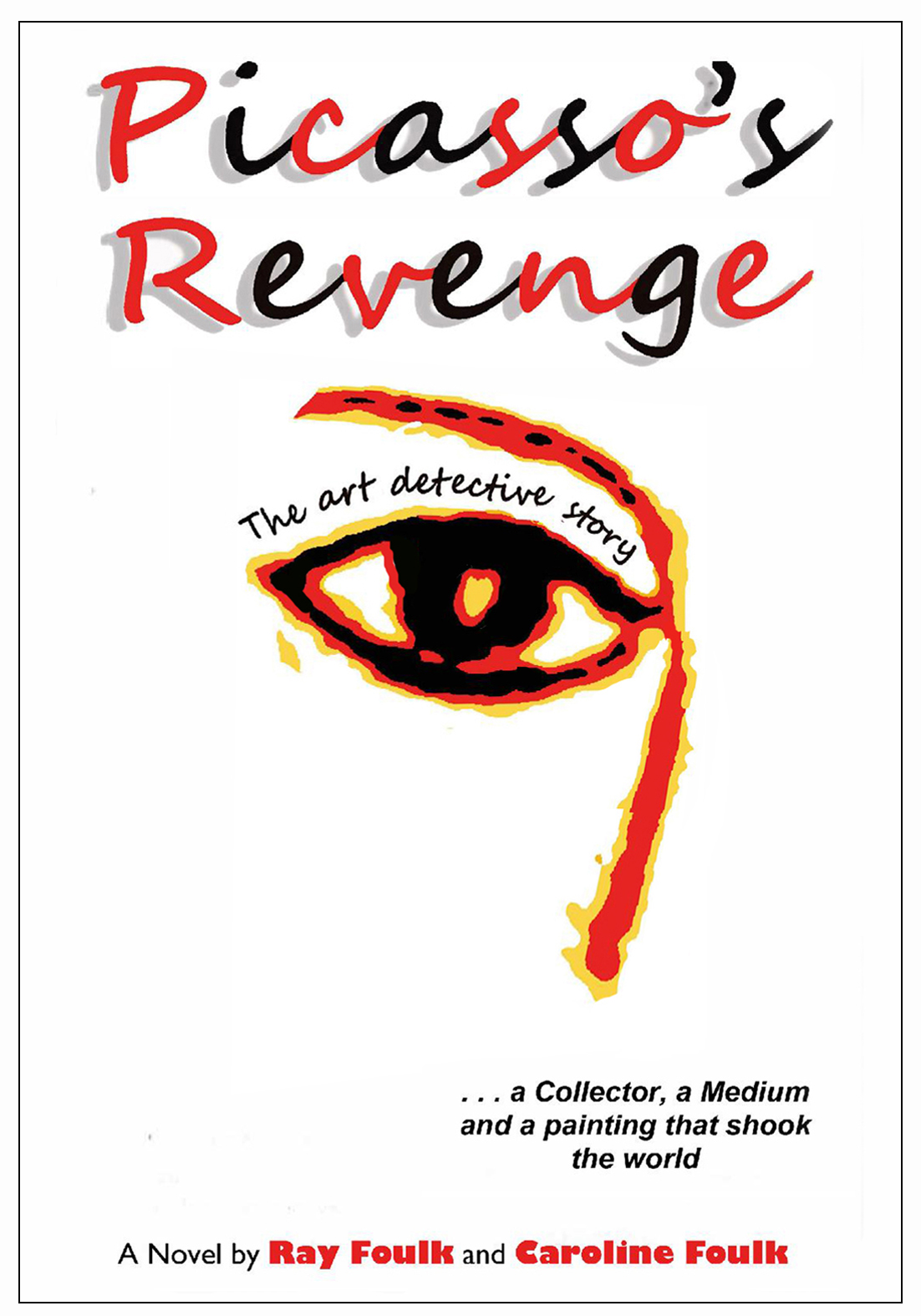Showing posts with label History. Show all posts
Showing posts with label History. Show all posts
Saturday, September 6, 2014
Coonin, A. Victor and The Florentine Press. From Marble to Flesh. The Biography of Michelangelo's David.
B'gruppo. 2014. c272p. illus. bibliog. index. ISBN 9788897696025 (paper) $25.13. B00LB8AWD0 (kindle ebook). $17.99. 9788897696100 (Nook book). $20.99.
The gigantic marble statue of the biblical King David (c. 1501-1503) by the sculptor, painter, and architect Michelangelo Buonarroti (1475-1564) indisputably is one of the most famous statues in the world. Originally intended to stand atop one of the spurs of the Cathedral of Santa Maria del Fiore in Florence, Italy, for more than three hundred years it stood on a pedestal in Florence’s Piazza della Signoria close to the door of the town hall known as the Palazzo Vecchio, where it became a political symbol of Florence and then of Italy. Now an artistic and popular icon of nearly worldwide import, David is acclaimed as a superlative example of Renaissance art created by one of the most gifted artistic geniuses who ever lived. Inspiring millions of people over the course of its centuries- long existence, Michelangelo’s David also may be one of the most reproduced masterpieces the world has ever seen. In this publication, which was crowd funded and produced by means of the assistance of The Florentine Press, Coonin (James F. Ruffin Professor of Art History at Rhodes College, Memphis, TN; Ph.D, Art History, Rutgers University; the author of dozens of articles, essays, and catalogue entries as well as the editor of two books on Renaissance Art), a distinguished art historian who specializes in Italian Renaissance Art, writes the first ever “biography” of Michelangelo’s masterpiece, while attempting to answer the fundamental questions: What makes David so famous? Why does a 500-year-old statue of a religious figure continue to almost universally resonate with viewers? Examining his subject by means of a humanizing approach that adopts various methodologies and gives the statue and its history many lifelike qualities, the author covers the Origins, Adolescence, Maturity, Midlife Crises, and Golden Years of David. Beginning his story of the colossus long before Michelangelo secured its commission and continuing it into the 21st- century, Coonin recounts how what started simply as a monumental block of marble from a quarry in the mountains near Carrara, Italy, became in Michelangelo’s hands an embodiment of human accomplishment, perfection, magnificence, and beauty. Before and following the death of the artist in 1564, the statue endured a precarious existence on the Piazza della Signoria in Florence until it was moved to Florence’s Accademia Gallery of the Accademia delle Belle Arti during the summer of 1873, at which time it occupied what would become a specially- built space called the Tribune. During the 19th and 20th centuries, David came to be widely copied and reproduced. It appeared as and in various forms and media including casts, statutes, advertisements, body tattoos, and other commodities. Its imagery was appropriated, adapted, and/or modified by various groups, causes, and contemporary artists. Today while Michelangelo’s statue has achieved iconic status, it still remains threatened by environmental, physical, social, and other phenomena. Retelling the complete history of Michelangelo’s David up to present times, Coonin discusses all aspects of David's life and many topics, not limited to the statue’s predecessors, symbolism, and naturalism as well as the cultural, political, and social contexts in which it was viewed. He addresses many subjects about David and Michelangelo that still may be considered controversial such as their sexualities and the statue’s nudity. The author also sets forth a considerable amount of information about David’s restorations and the perils that he continues to face into the future. Scholarly yet very accessible and engaging, this noteworthy, well-presented, cleverly- conceived, first publication of its kind to consider Michelangelo’s masterpiece over the course of many centuries and in terms that humanize the statue and consider it as a living art object will be of significant interest to art lovers, students, scholars, and others. It is very highly recommended for many academic, special, and public libraries. Review copy. Availability: Amazon.com, Barnes & Noble.com, The Florentine Press
Monday, November 12, 2012
Stevens, Ann and Kelly, Giles. Diplomatic Gardens of Washington.
Schiffer Publishing, Ltd.. 2012. c128p. illus. bibliog. ISBN 978-0-7643-3978-3. $34.99.
In this generously-illustrated (168 color images) publication, Stevens, a widely published photographer, and Kelly, a retired US diplomat and naval officer, take readers on an exclusive, armchair traveler’s tour of twelve embassy gardens in Washington, DC. In twelve chapters, each of which showcases a different garden, they cover the best- kept embassy gardens of Washington, which are rarely open to the public. Focusing on the Ambassadors’ gardens of Australia, Britain, Denmark, the European Union, France, the Federal Republic of Germany, the Apostolic Nunciature of the Holy See, Italy, the Republic of Korea, the Royal Netherlands, Norway, and Sweden, Stevens and Kelly provide historical facts about the properties, the Ambassadors’ residences, and chanceries. They detail the unique, cultural and diplomatic histories of the gardens, their designs, features, trees, and plants. Stevens and Kelly illustrate their text by means of color photographs, many of which are full-page and further document the features, trees, and plants of the gardens. Each chapter includes many photographs, with fourteen being the average. Visually engaging, artfully designed, thoughtfully written, and intuitively presented, based upon the organization of each garden within its embassy compound, this book may interest garden lovers, horticulturalists, students, scholars, professionals, and others. Including a one- page foreword by the Executive Director of the United States Botanic Garden, Holly H. Shimizu, a table of contents, photographic captions, and bibliography, it constitutes a sufficiently well-documented addition to the literature on gardens and garden history. As a basic resource on some of the diplomatic gardens of Washington, DC, it is highly recommended for many types of libraries, not limited to large public and special libraries. Review copy. Availability: Amazon.com, Barnes & Noble.com, Schiffer Publishing Ltd.
In this generously-illustrated (168 color images) publication, Stevens, a widely published photographer, and Kelly, a retired US diplomat and naval officer, take readers on an exclusive, armchair traveler’s tour of twelve embassy gardens in Washington, DC. In twelve chapters, each of which showcases a different garden, they cover the best- kept embassy gardens of Washington, which are rarely open to the public. Focusing on the Ambassadors’ gardens of Australia, Britain, Denmark, the European Union, France, the Federal Republic of Germany, the Apostolic Nunciature of the Holy See, Italy, the Republic of Korea, the Royal Netherlands, Norway, and Sweden, Stevens and Kelly provide historical facts about the properties, the Ambassadors’ residences, and chanceries. They detail the unique, cultural and diplomatic histories of the gardens, their designs, features, trees, and plants. Stevens and Kelly illustrate their text by means of color photographs, many of which are full-page and further document the features, trees, and plants of the gardens. Each chapter includes many photographs, with fourteen being the average. Visually engaging, artfully designed, thoughtfully written, and intuitively presented, based upon the organization of each garden within its embassy compound, this book may interest garden lovers, horticulturalists, students, scholars, professionals, and others. Including a one- page foreword by the Executive Director of the United States Botanic Garden, Holly H. Shimizu, a table of contents, photographic captions, and bibliography, it constitutes a sufficiently well-documented addition to the literature on gardens and garden history. As a basic resource on some of the diplomatic gardens of Washington, DC, it is highly recommended for many types of libraries, not limited to large public and special libraries. Review copy. Availability: Amazon.com, Barnes & Noble.com, Schiffer Publishing Ltd.
Saturday, May 5, 2012
Spencer, Donald D.. Greetings from Sarasota, Florida: Bradenton & Surrounding Communities.
Schiffer Publishing Ltd.. 2009. 128p. illus. bibliog. index. ISBN 978-0-7643-3213-5. $24.99
In this generously- illustrated (375 color images) publication, the base of which was formed from the author’s postcard, photograph, and memorabilia collections, Spencer (Ph.D., Computer Science), a renowned educator and writer, who has written over 200 books, many of which pertain to Florida, takes readers on a predominantly visual tour of Sarasota, Bradenton, and their surrounding communities. In the preface and part one of four, Spencer covers the early history of postcards, Florida, and the Sarasota-Bradenton area. In parts two and three, each of which is comprised of three chapters and forms the heart of the book, the author provides overviews of Sarasota and Bradenton as well as showcases their attractions, beaches, bridges, hotels, parks, public buildings, schools, streets, transportation networks, and more. Featured mostly by means of postcard reproductions and their captions, “places to go and things to do,” many of which still exist, include Braden Castle, Bradenton Beach, Cars of Yesterday (now the Sarasota Classic Car Museum), Circus Hall of Fame, De Soto National Memorial, The Gamble Plantation, Marie Selby Botanical Gardens, Ringling Brothers and Barnum & Bailey Circus Winter Quarters, Lido Beach, The John and Mable Ringling Museum of Art, Sarasota High School (the future home of the Sarasota Museum of Art), Sarasota Jungle Gardens, Siesta Key Beach, and the Sunshine Skyway Bridge. In part four, consisting of six very short chapters, averaging three pages each, Spencer sets forth descriptions and images pertaining to nearby communities, not limited to Anna Marie Island, Arcadia, Punta Gorda, Sebring, and Venice. Postcard reproductions are captioned, with their dates and values also noted, thereby making this a valuable resource for collectors. Of interest to general readers, residents, tourists, collectors, and others, this colorful, nicely-presented book, with a bibliography, index, and more, belongs in public and special libraries. Review copy. Availability: Amazon.com, Barnes & Noble.com, Schiffer Books
In this generously- illustrated (375 color images) publication, the base of which was formed from the author’s postcard, photograph, and memorabilia collections, Spencer (Ph.D., Computer Science), a renowned educator and writer, who has written over 200 books, many of which pertain to Florida, takes readers on a predominantly visual tour of Sarasota, Bradenton, and their surrounding communities. In the preface and part one of four, Spencer covers the early history of postcards, Florida, and the Sarasota-Bradenton area. In parts two and three, each of which is comprised of three chapters and forms the heart of the book, the author provides overviews of Sarasota and Bradenton as well as showcases their attractions, beaches, bridges, hotels, parks, public buildings, schools, streets, transportation networks, and more. Featured mostly by means of postcard reproductions and their captions, “places to go and things to do,” many of which still exist, include Braden Castle, Bradenton Beach, Cars of Yesterday (now the Sarasota Classic Car Museum), Circus Hall of Fame, De Soto National Memorial, The Gamble Plantation, Marie Selby Botanical Gardens, Ringling Brothers and Barnum & Bailey Circus Winter Quarters, Lido Beach, The John and Mable Ringling Museum of Art, Sarasota High School (the future home of the Sarasota Museum of Art), Sarasota Jungle Gardens, Siesta Key Beach, and the Sunshine Skyway Bridge. In part four, consisting of six very short chapters, averaging three pages each, Spencer sets forth descriptions and images pertaining to nearby communities, not limited to Anna Marie Island, Arcadia, Punta Gorda, Sebring, and Venice. Postcard reproductions are captioned, with their dates and values also noted, thereby making this a valuable resource for collectors. Of interest to general readers, residents, tourists, collectors, and others, this colorful, nicely-presented book, with a bibliography, index, and more, belongs in public and special libraries. Review copy. Availability: Amazon.com, Barnes & Noble.com, Schiffer Books
Thursday, November 24, 2011
Minardi, Joseph. Historic Architecture in West Philadelphia, 1789-1930s.
Schiffer Publishing. 2011. c192p. illus. maps. bibliog. index. ISBN 978-0-7643-3771-0. $50.00.
For many residents of Philadelphia, PA, West Philadelphia, the area situated west of the Schuylkill River that once was Blockley and Kingsessing Townships, is comprised of a cluster of at least seven neighborhoods, including the Woodlands, University City, Spruce Hill, Cedar Park, Squirrel Hill, Garden Court, Walnut Hill, and Powelton Village. Originally a collection of farms and hamlets along the Schuylkill River, West Philadelphia grew into a streetcar suburb of Philadelphia during the mid-19th century, when it was incorporated into the City of Philadelphia. Today West Philadelphia is a thriving locality, made up of residents, businesses, and esteemed institutions of higher education, not limited to Drexel University and The University of Pennsylvania. In this architectural history of West Philadelphia and the architects who made it happen, one of the first, nearly comprehensive, largely pictorial examinations since the comparable West Philadelphia Illustrated by Vieira M. Laffitte was published in 1903 (p. 5), Minardi, a graphic designer (p. 5), award-winning photographer (recipient of the 2007 Preservation Initiative Award, University City Historical Society), and resident of Philadelphia (inside back book cover), takes readers on a historical, visual tour of West Philadelphia’s neighborhoods and its buildings, constructed between the late eighteenth and early twentieth-centuries. In nine chapters, the author presents brief historical overviews of West Philadelphia’ s neighborhoods as well as more than 500 images illustrating the various architectural structures comprising them. Minardi showcases apartment buildings, churches, charitable institutions, clubs, colleges, housing developments, homes, inns, libraries, monuments, universities, row houses, schools, stadiums, train stations, and more. In chapter nine, the author features alphabetically-arranged biographies of selected architects and their firms. Thoughtfully-presented and very generously-illustrated, with archival images, maps, and many color photographs taken by Minardi, this well-written, easy-to-read, accessible, engaging publication provides an excellent introduction to the historical architecture of West Philadelphia. Sufficiently well-documented, with image captions, including building names, addresses, and styles, back-of-the-book endnotes, a bibliography, and an index, it only lacks a chronology, maps keying the various architectural landmarks on them, an index of buildings by street addresses, and appendices containing suggested, brief, walking or driving tours of the featured neighborhoods, all of which further would have enhanced the subject and the its presentation. Constituting a visual feast of exterior and interior views of many historic edifices in West Philadelphia, this book is sure to delight, inform, and educate Philadelphians, general readers, students, scholars, architects, urban planners, historians, professionals, and others. It is very highly recommended for local and large public libraries as well as for academic and special libraries. Review copy. Availability: Amazon.com, Barnes & Noble.com
Sunday, November 6, 2011
Graham, Wade. American Eden: From Monticello to Central Park: What Our Gardens Tell Us About Who We Are.
HarperCollins. April 2011. c480p. bibliog.. illus. ISBN 978-0-06-158342-1. $35.00. Google eBook. $16.99. Kindle eBook. B004IWR37Y. $16.99.
In this publication, Graham (Bachelor of Arts, Comparative Literature, Columbia University; Master of Arts and Ph.D., U.S. History, University of California, Los Angeles; teacher of urban and environmental policy, School of Public Policy, Pepperdine University), a renown, Los Angeles- based garden designer, landscape architect, historian, writer, journalist, and environmental activist, presents a fascinating yet erudite history of American gardens. According to the author, for more than two hundred years, Americans have revealed themselves in their gardens, which have been rooted in time and place and have reflected our national spirit and concerns. To prove his thesis, Graham melds various methodological approaches, including biography, history, cultural commentary, literature, and horticultural studies, into a lengthy, discursive narrative, thereby resulting in a multivalent examination of American gardens and the people who have created them from the eighteenth century to the present. In seven chapters, Graham discusses what he considers to be the various types of American gardens in terms of broad historical categories: the Founding Gardens (1600-1826), parks and suburban gardens (1820-1890), Golden Age gardens (1880-1914), Arts and Crafts gardens (1850-1925), Californian gardens (1920-1960), post-modern gardens (1940s-2000), and contemporary gardens (2000- ). Within each era, he shows how the geometric and naturalistic aesthetic paradigms from the Renaissance and 18th century continued and were modified to suit the tastes of mostly wealthy and middle-class, American-born individuals, who sought to express themselves and their ideals through their gardens. Overall, Graham successfully distinguishes American gardens from their counterparts in other countries. While the author’s thesis that American gardens are unique yet reflective of various aesthetic, cultural, ethical, political, psychological, and social influences may not be entirely new, the original value of Graham’s text rests in its comprehensive, scholarly analysis of the subject and its vast, encyclopedic overview. Well-documented, with endnotes, a bibliography, and an index, this publication may need more reproductions (75 black-and-white reproductions and a 16- page color insert are included), to the extent that they further may illustrate and clarify the author’s main points for readers, who may get sidetracked by his approach. Enlightening, interesting, engaging, and accessibly-written, but not necessarily easy-to-follow, this foundational book, which serves as an intelligent guide to American gardens, will be of considerable interest to some garden lovers, students, scholars, professionals, and others. It is highly recommended for large public, academic, and special library collections. Uncorrected Proof. Availability: Amazon.com, Amazon Kindle eBook, Barnes & Noble.com,Google eBook
Saturday, February 26, 2011
Foulkes, Julia L.. To the City: Urban Photographs of the New Deal.
Temple University Press. 2011. c142p. bibliog.. illus. index. ISBN 978-1-59213-998-9 (paper). $24.95. ISBN 978-1-59213-997-2 (cloth). $74.50. ISBN 978-1-592213-999-6 (Adobe Digital Edition PDF e-book). $24.95. Google eBook. $14.72.
As the United States was transformed from a rural to an urban nation during the 1930s and 1940s, many individuals were lured to cities, which became destinations of hope, opportunity, and renewal. (pp. 3-4) Photographers participated in this urban migration that was as much a movement of peoples as a shift in the locus of the American imagination. (p. 5) In this generously- illustrated publication, showcasing more than 100 halftone photographs from the Farm Security Administration (FSA)/Office of War Information (OWI) project along with extracts from the Works Progress Administration (WPA) guidebooks and oral histories, Foulkes, an Associate Professor of History at The New School (PhD, University of Massachusetts, Amherst) and the author of Modern Bodies, corrects the commonly held view that the FSA/OWI photographers only were concerned with documenting rural life in the 1930s and 1940s. She shows that the “propulsion to the city” was an equally important theme in their works, many of which captured views of cities, their inhabitants, and happenings. Featuring images by notable photographers such and Dorothea Lange, Walker Evans, and Gordon Parks as well as those by lesser- known ones, Foulkes illuminates the changes in landscapes, habits, and aspirations that the march to American cities encompassed. Dividing her publication into five chapters, organized around the broad themes of intersection, traffic, high life/low life, the city in the country, and citizens, she includes images of intersections, roads, street corners, cars, traffic signs, lights, people, trains, buses, buildings, houses, public places, parks, theaters, stores, newsstands, nightclubs, dance halls, entertainment venues, bus stations, highways, motels, restaurants, summer camps, homes, suburbs, meetings, campaigns, picket lines, demonstrations, support for the war effort, parades, flags, and more. The cities represented span the geographical area of the United States from New York in the North, to New Orleans in the South, San Francisco in the West, and Washington, D.C. in the East. Photographs taken in more than thirty places are compiled by the author in a collection that captures the increasing urbanization of the United States, its cultures, and peoples, who lived in cities, suburbs, and towns throughout the country. Nicely-presented, thoughtfully-written, well-argued, and sufficiently-documented, this easy-to-read, engaging book, consisting mostly of photographs and comprising the series Urban Life, Landscape, and Policy (ed. Zane L. Miller, David Stradling, and Larry Bennett), will be of significant interest to general readers, students, scholars, and others. It is highly recommended for many public, academic, and special library collections. Review copy. Availability: Amazon.com, Barnes & Noble.com, Temple University Press (distrib. by University of Chicago), Google Books.
Friday, February 25, 2011
Parvaiz, Kashif. Russia’s Prestige: Historical Architecture.
Outskirts Press. 2010. c412p. bibliog.. illus. ISBN 978-1-4327-6611-5. $34.95. B004DERHDW (Kindle Edition e-Book). $12.99. Outskirts Press e-Book. $5.00.
In this generously- illustrated publication (more than 200 black-and-white reproductions), which is intended to serve as the “starting place” for the “study of Russian architecture” (Foreword, ii), Parvaiz, who owns a construction firm located in Brooklyn, NY (Riyaan Developers), takes readers on a historical tour of Russian architecture from medieval times (988 C.E.) to the present. In eight chapters, organized chronologically, the author describes structures built during various time periods and shows how they reflected the nation’s state of affairs. He presents a wide variety of buildings, including Russian Orthodox churches, gates, kremlins, monasteries, convents, palaces, squares, monuments, prisons, dormitories, hotels, government edifices, and apartment buildings. At each chapter’s end, Parvaiz provides brief biographies of prominent architects of the era and a glossary of seemingly unfamiliar terms used in the chapter. After chapter eight, the author sets forth three additional sections showcasing the synagogues and the religious buildings of Buddhist and Islamic denominations in Russia as well as the stylistic periods of Russian architecture. While Parvaiz’s text may be characterized as easy-to-read, “rich, compelling” (Publisher’s press release), and “evocative” (Foreword, ii), it may need to be better presented. Firstly, the last three sections of this book may be incorporated into the first eight chapters. Secondly, the architects’ biographies and glossaries may be consolidated as appendices. Architects’ names and glossary terms may be boldfaced in the text when they first appear, thereby alerting readers to their entries. Thirdly, this publication’s reproductions should be enlarged and presented in color, whenever possible. Fourthly, this book’s illustrations ideally should reference their sources in their captions or a list of illustrations with photographic credits should be included. Fifthly, a back-of-the book index and a selected bibliography that separates textual sources from photographic ones are crucial. Sixthly, footnotes or endnotes may be necessary, due to the relatively “enigmatic” (Foreword, i), unpublished (Author’s courtesy interview sheets) aspects of Russian architecture and its history. A detailed chronology would be welcome. Seventhly, chapters may need to be distinguished better in terms of their layouts and by means of numbered, clearly-delineated chapter headings. Finally, all grammatical, spelling, and/or typographical mistakes should be corrected. This book will be of interest to students, travelers, art lovers, general readers, history aficionados, and others. In light of the aforementioned, some libraries may want to carefully consider this publication. Review copy. Availability: Amazon.com, Amazon.com (Kindle edition), Barnes & Noble.com, Outskirts Press Bookstore
Labels:
Architecture,
Book Review,
History,
Kashif Parvaiz,
Russia,
Russia's Prestige
Sunday, October 3, 2010
Book Review: Heinzen, Nancy M.. The Perfect Square: a History of Rittenhouse Square.
Temple University Press. 2009. 203p. illus. index. bibliog. ISBN 9781592139880. $29.50. ISBN 9781592139903 (e-book). $29.50.
For two centuries, Rittenhouse Square in Philadelphia, Pennsylvania has captured the hearts and minds of Philadelphians, visitors to the City of Brotherly Love, social climbers, urban planners, novelists, and others. One of the five squares that William Penn (1644-1718) established when he founded Philadelphia in 1681, the southwest-situated Rittenhouse Square developed from a marshy plot surrounded by brickyards and workers’ homes into an urban oasis that evidences its unique and varied history. In this generously- illustrated (more than 50 black-and-white reproductions) and painstakingly- researched publication, with endnotes and a bibliography, Heinzen (formerly a counselor in the Philadelphia School District), a longtime resident of Rittenhouse Square, who enthusiastically is committed to preserving it, provides the first, full-length social history of one of America’s greatest, public, urban spaces. In nine chapters, covering the Square from its beginnings until the present, the author showcases the residents, groups, organizations, and businesses that made the Square a vital place over its continuing lifetime. She sets forth the social, cultural, and political developments that influenced the landmark’s development from a neighborhood on the margins of the city of Philadelphia into a thriving residential, business, and cultural district. Replete with many reproductions, historic photographs, and drawings, this thoughtfully-conceived, coffee table-like publication also is artfully- designed, being sized as a perfect square (8 X 8 in.). It will interest general readers, students, scholars, and others. Highly recommended for many large public and academic library book collections, particularly for those located in Philadelphia and its surrounding regions. Review copy. Availability: Amazon.com, Barnes & Noble.com
Subscribe to:
Posts (Atom)
















